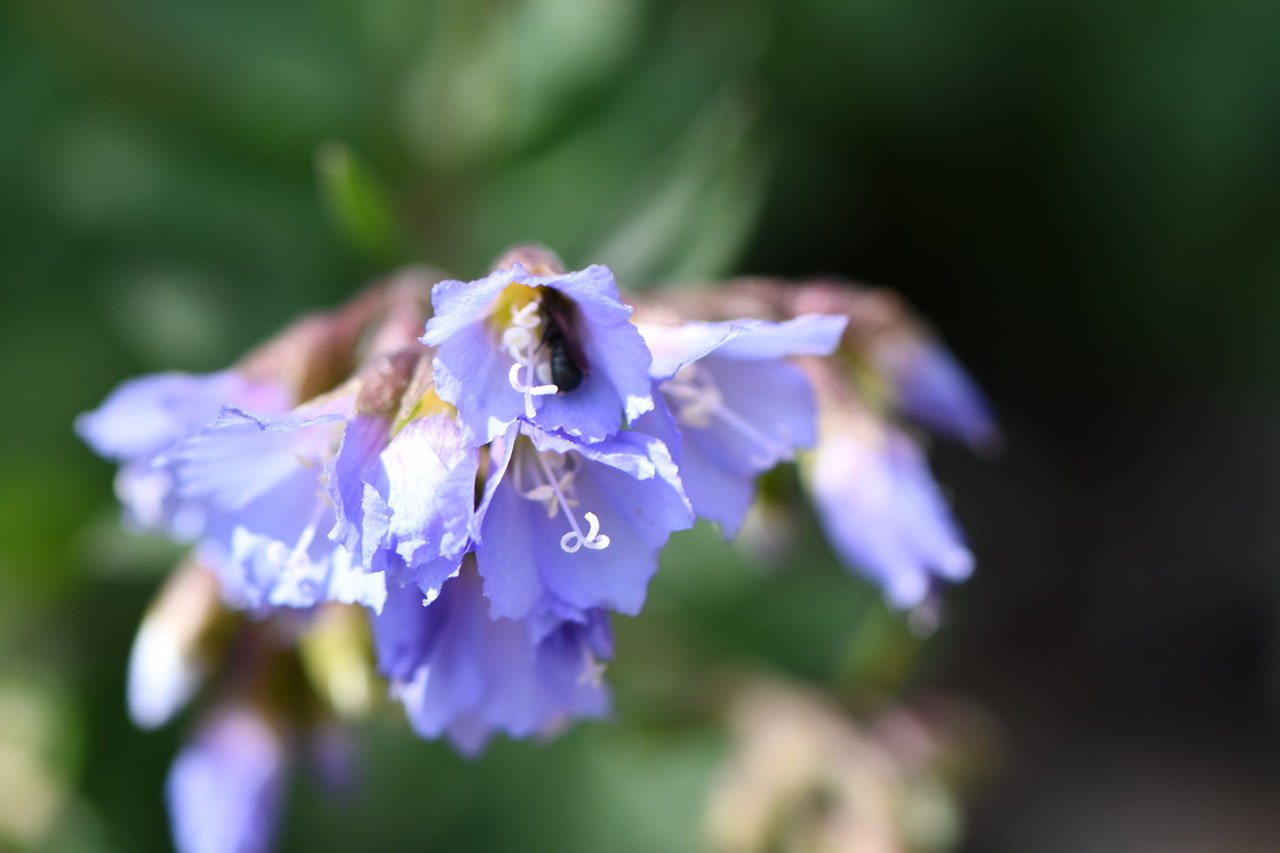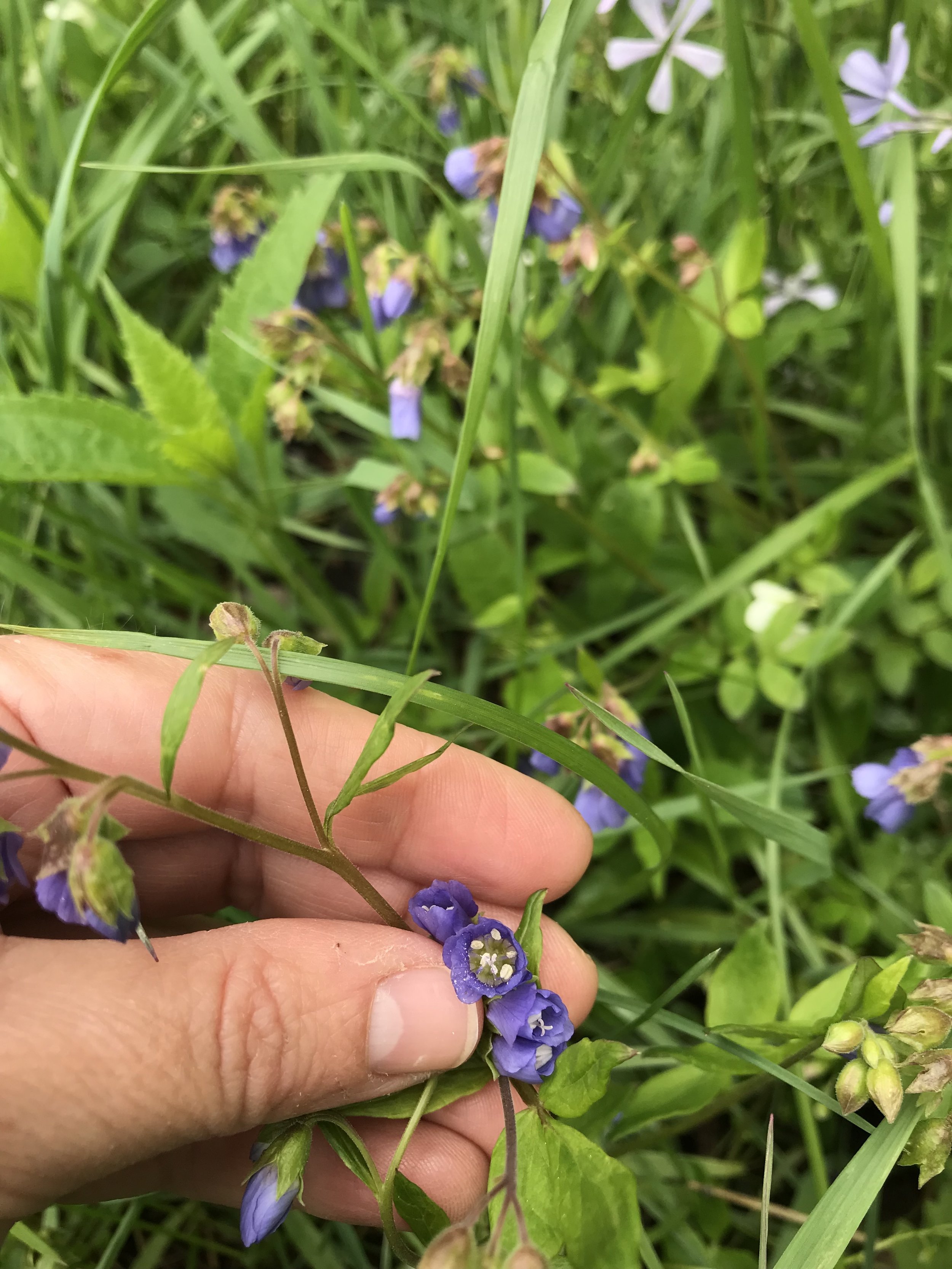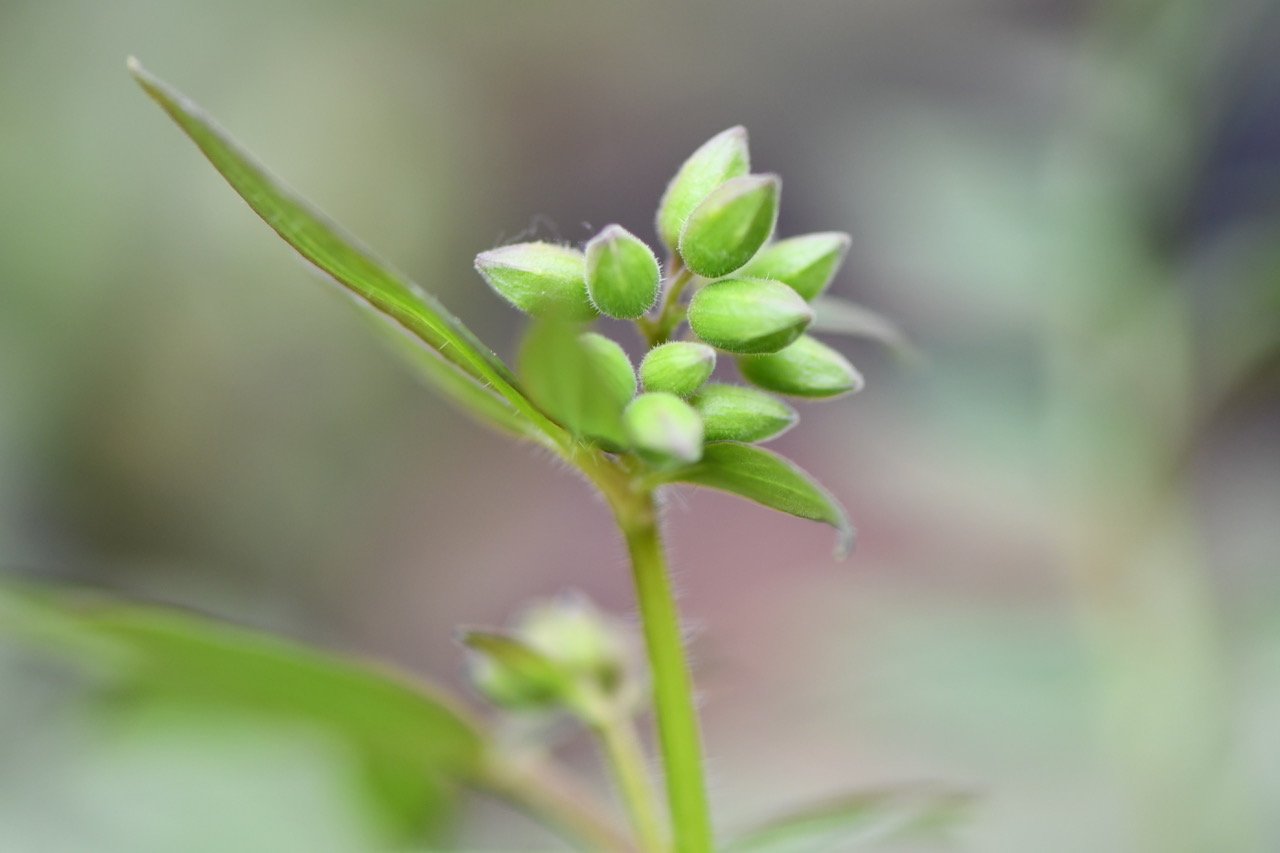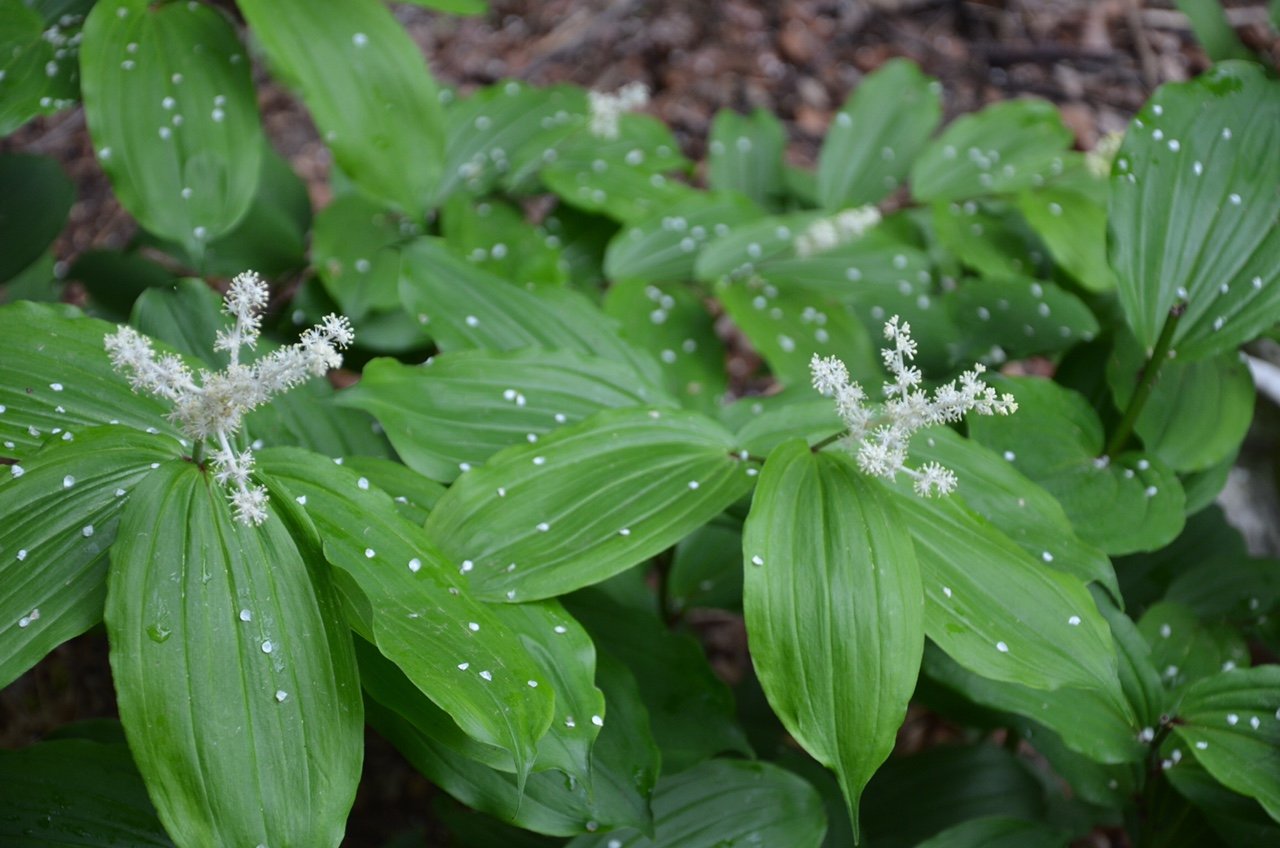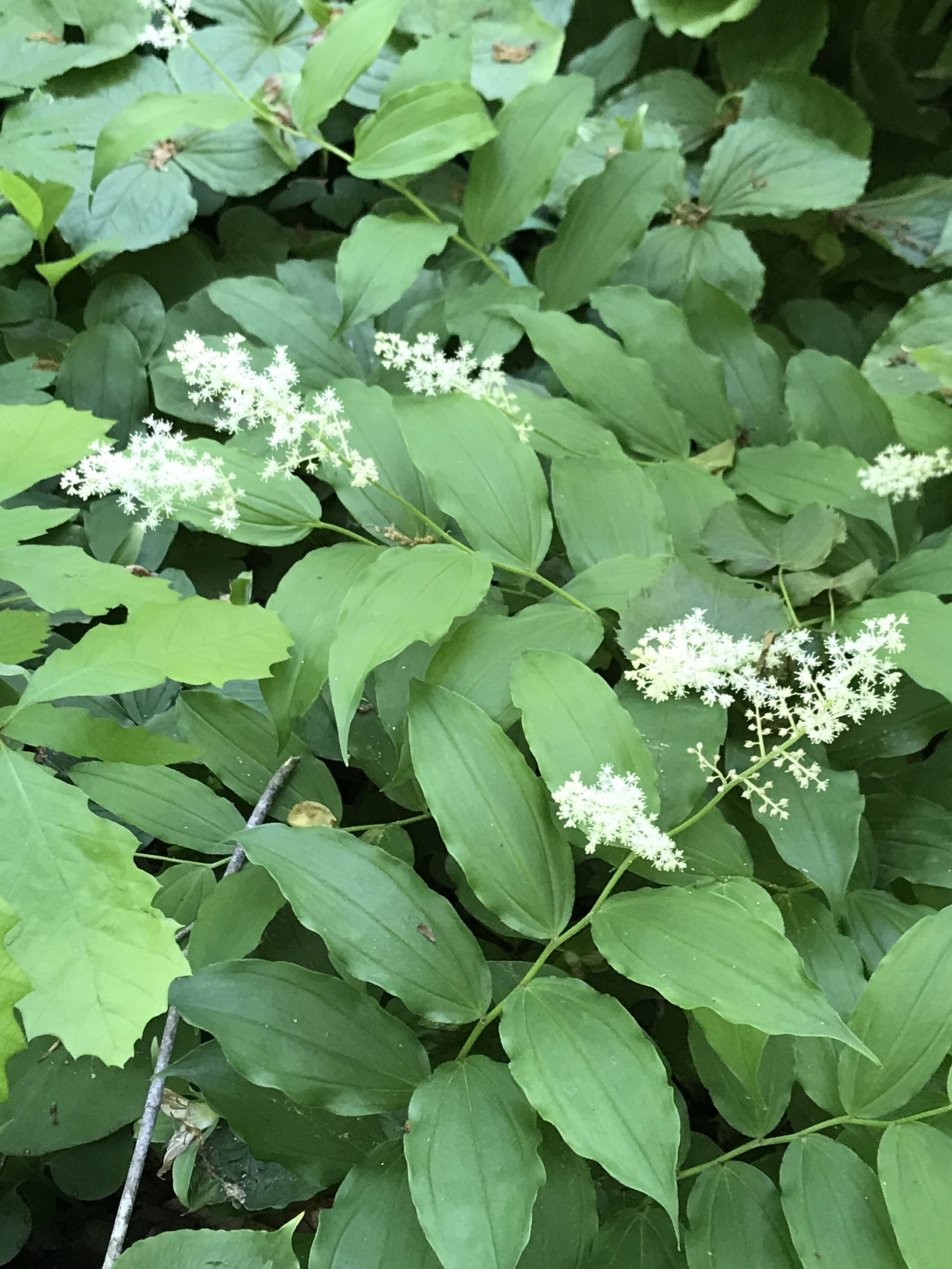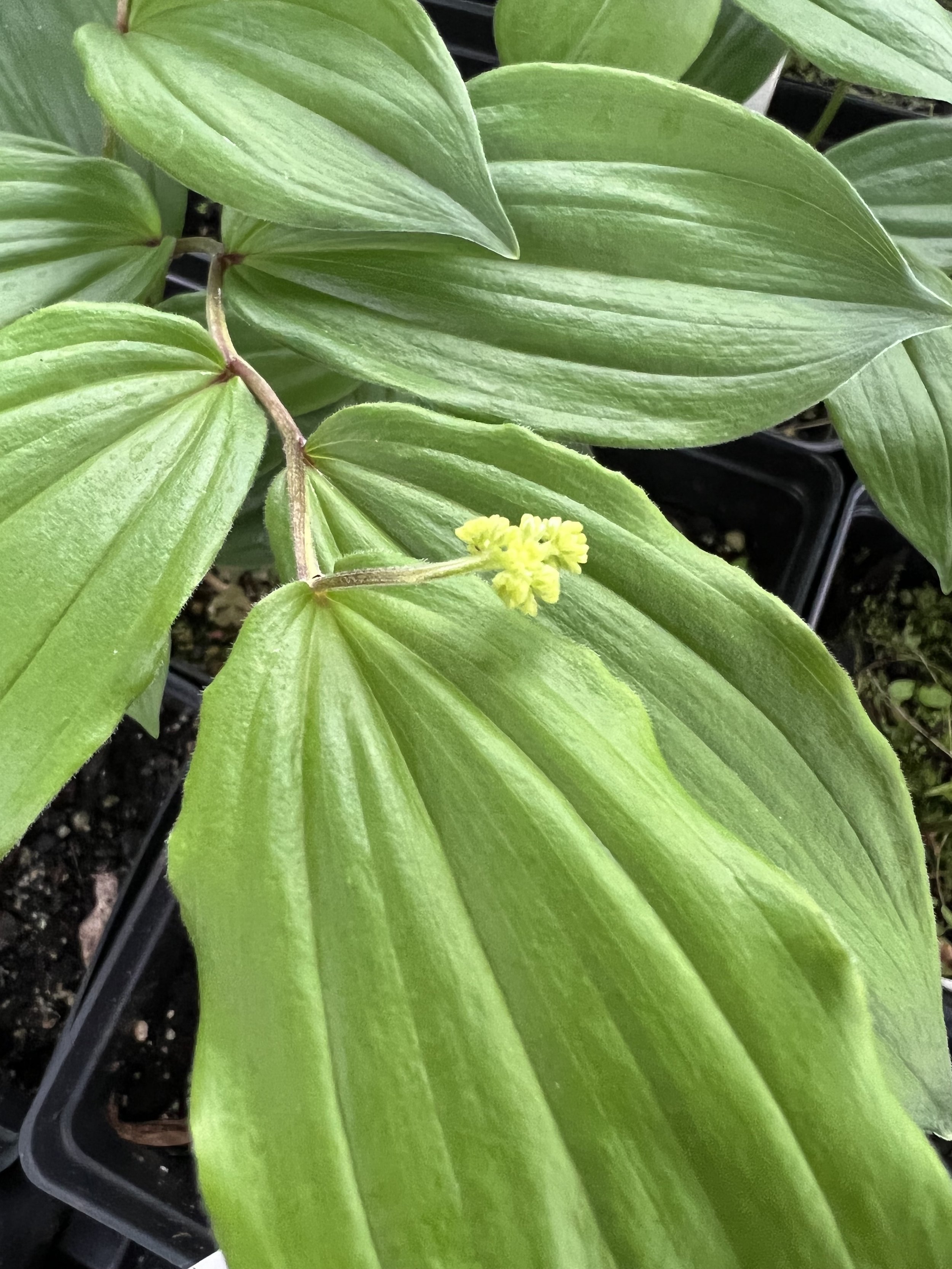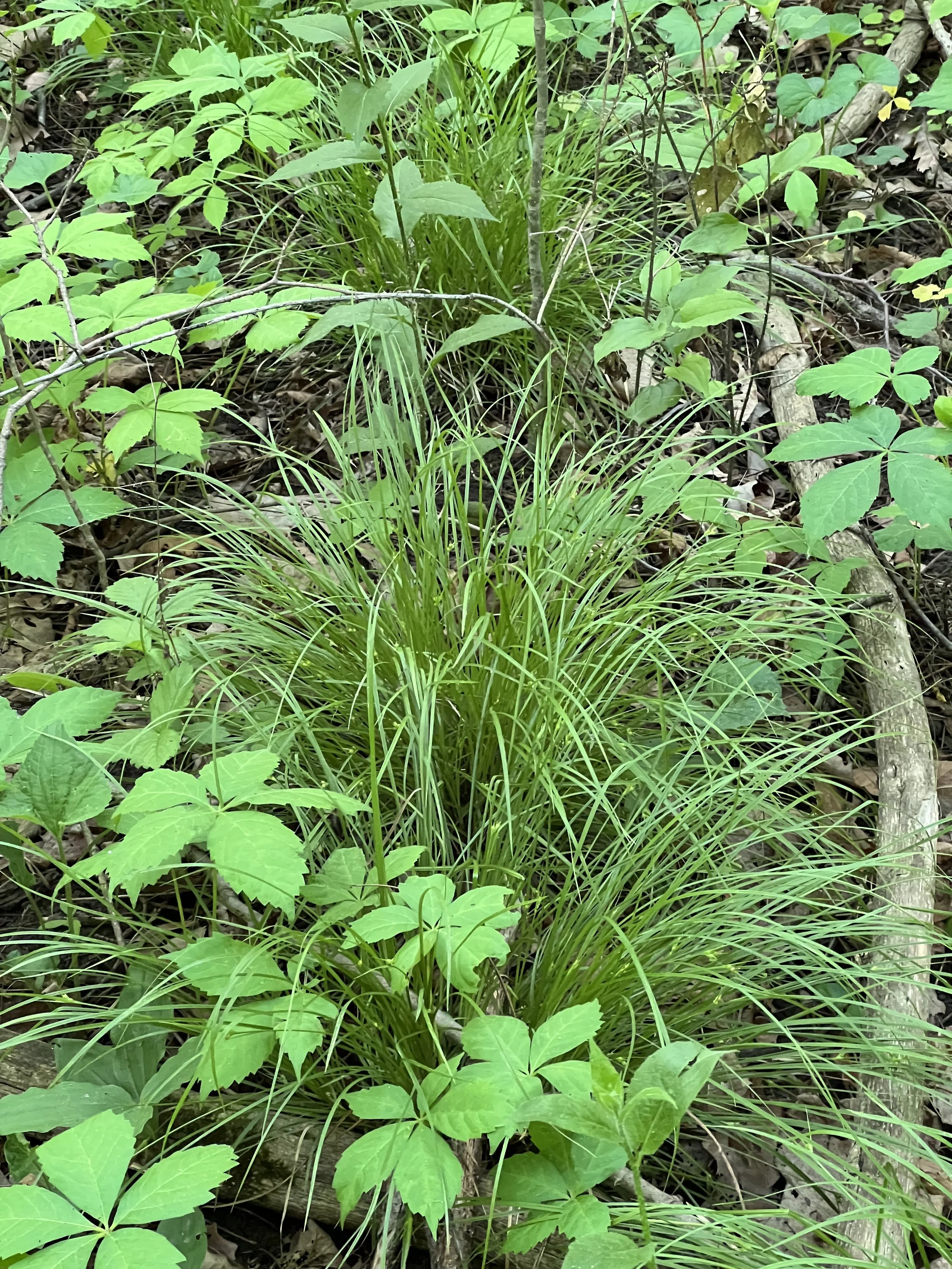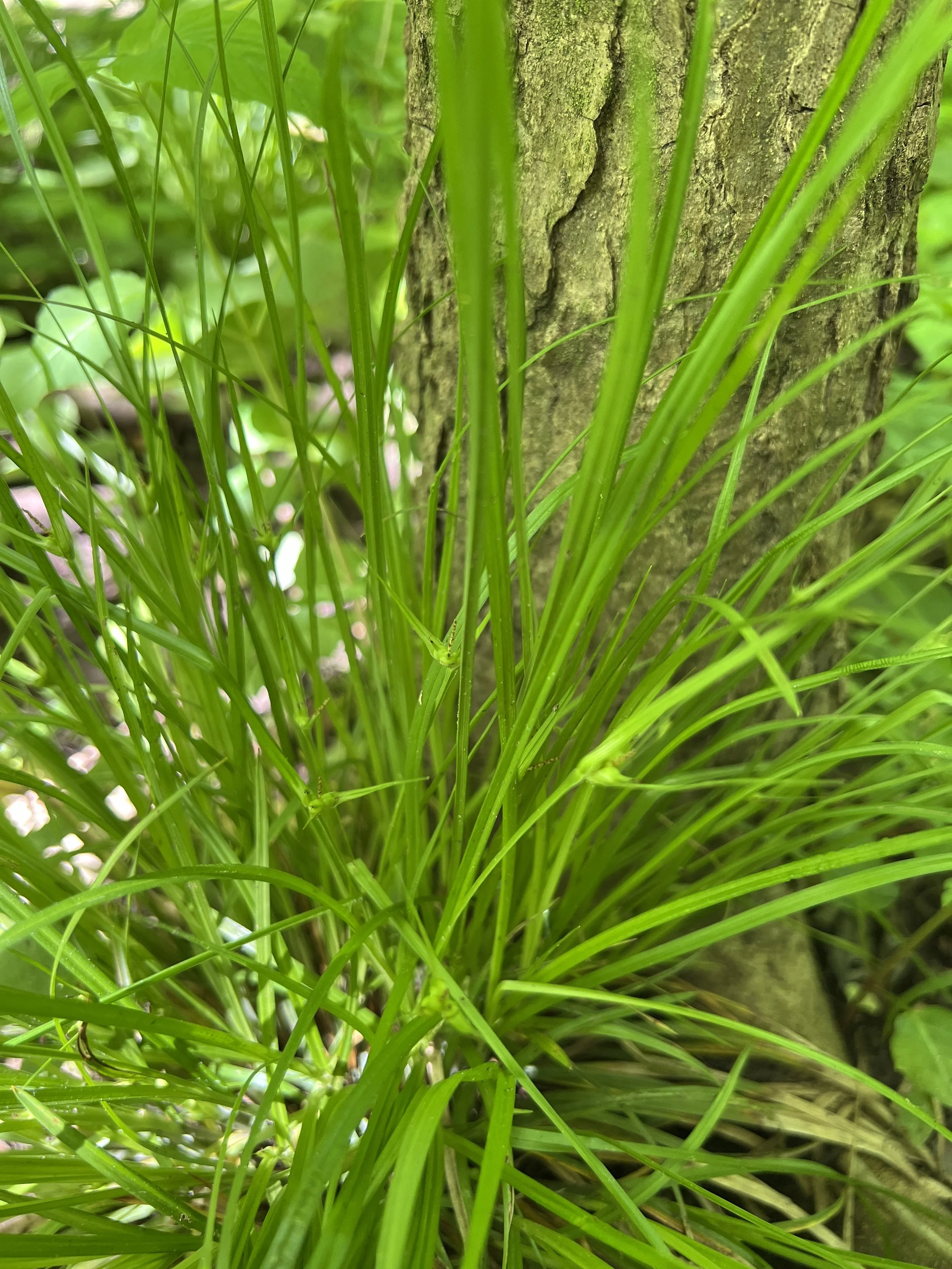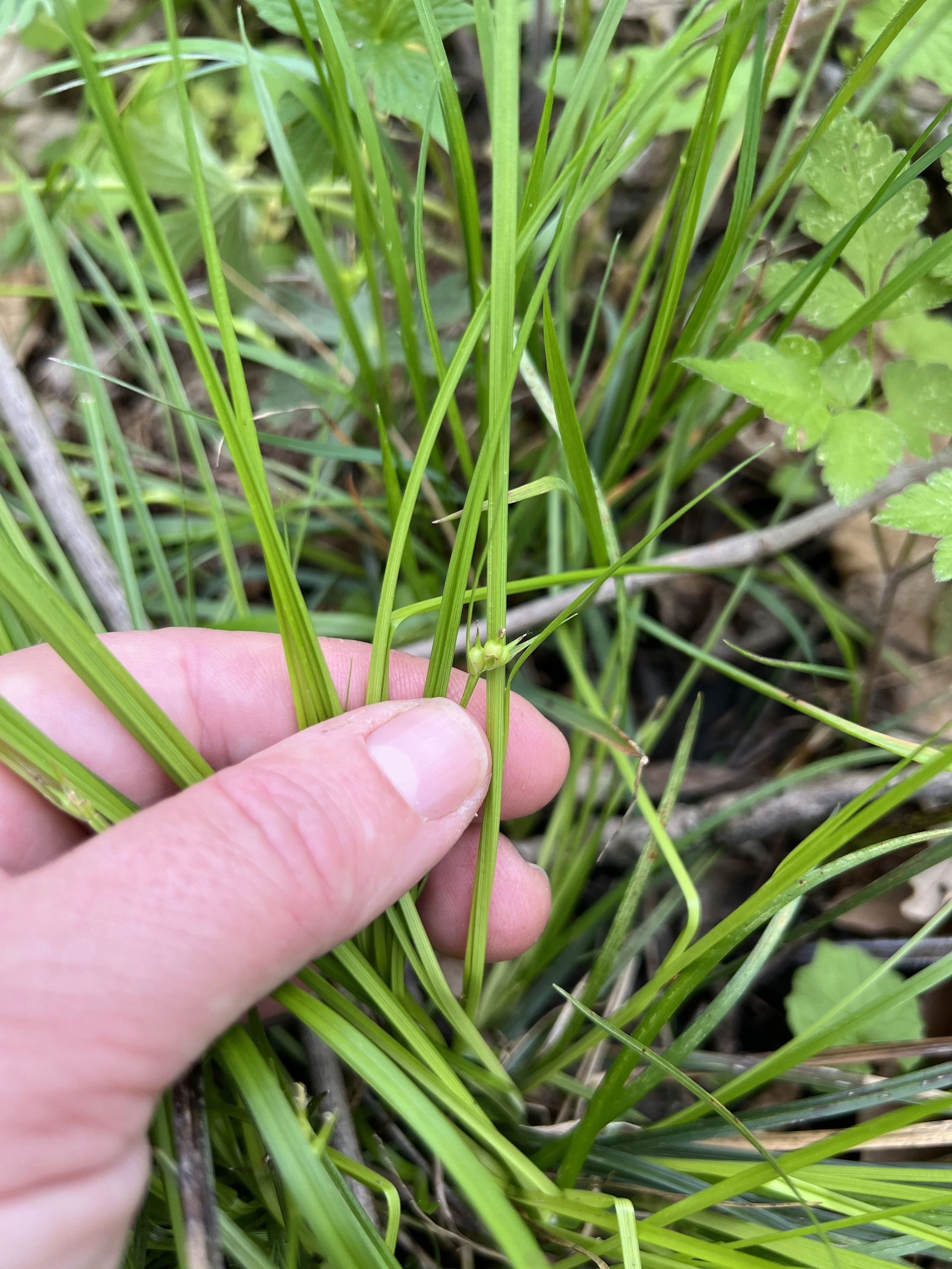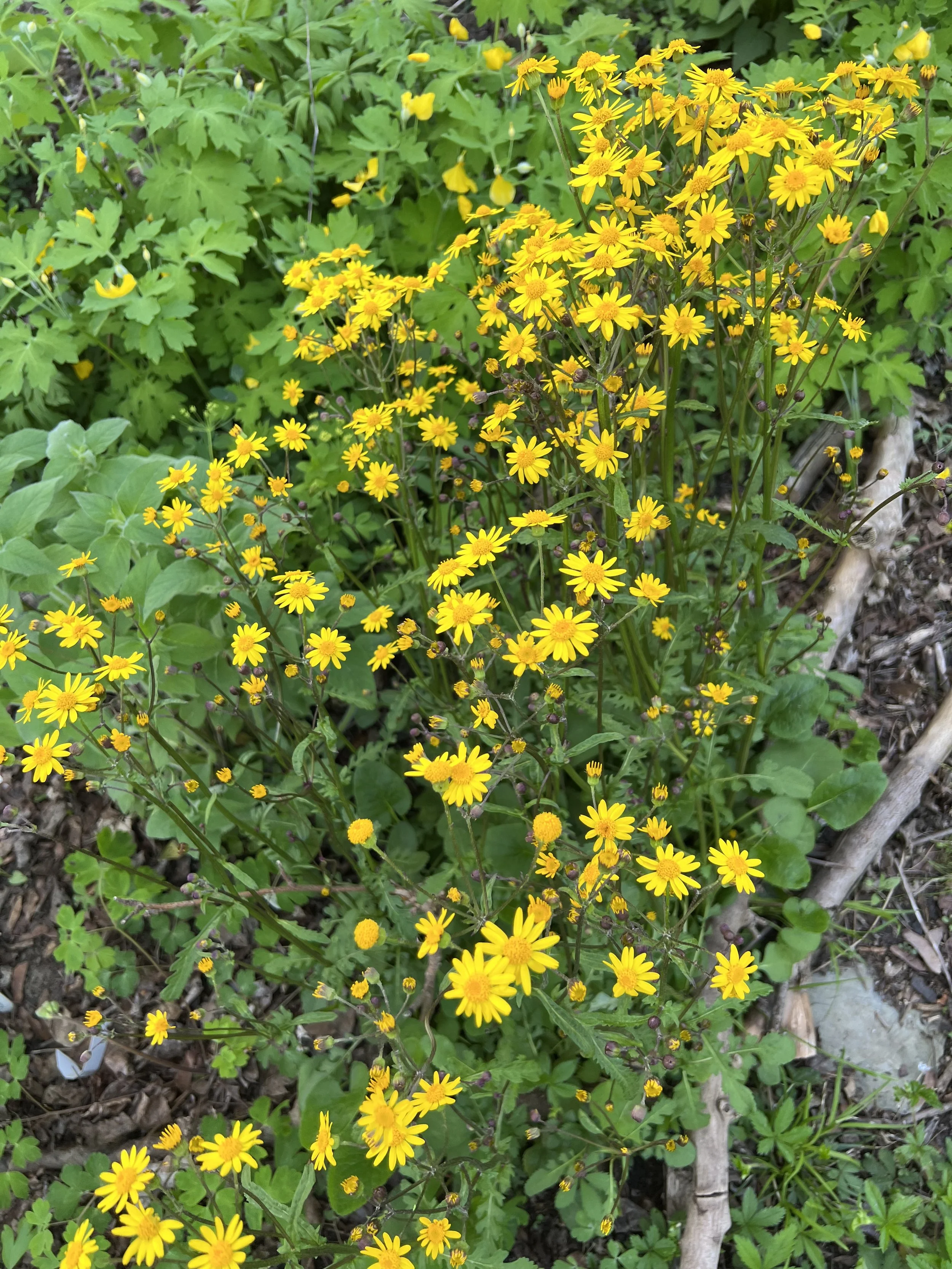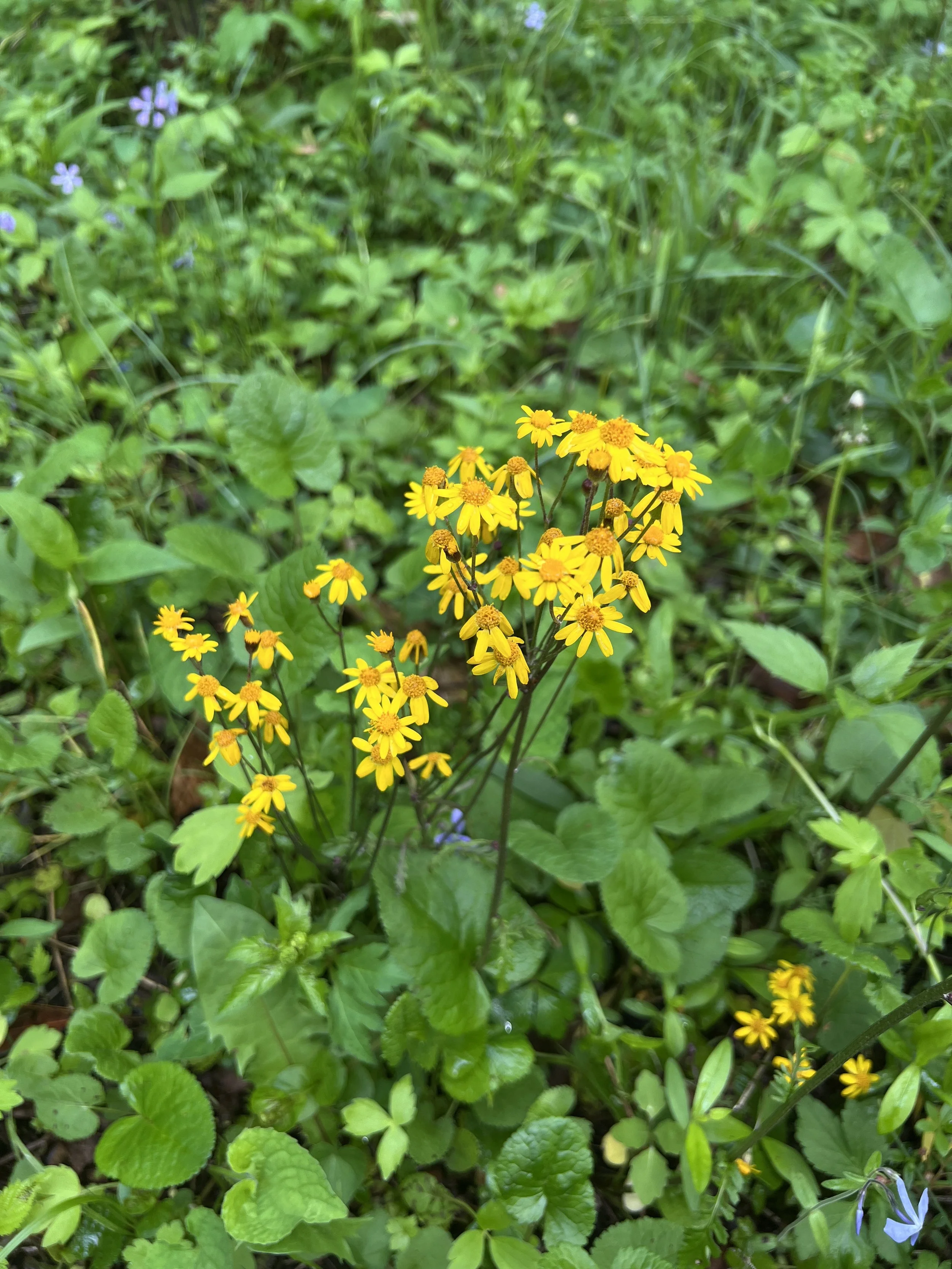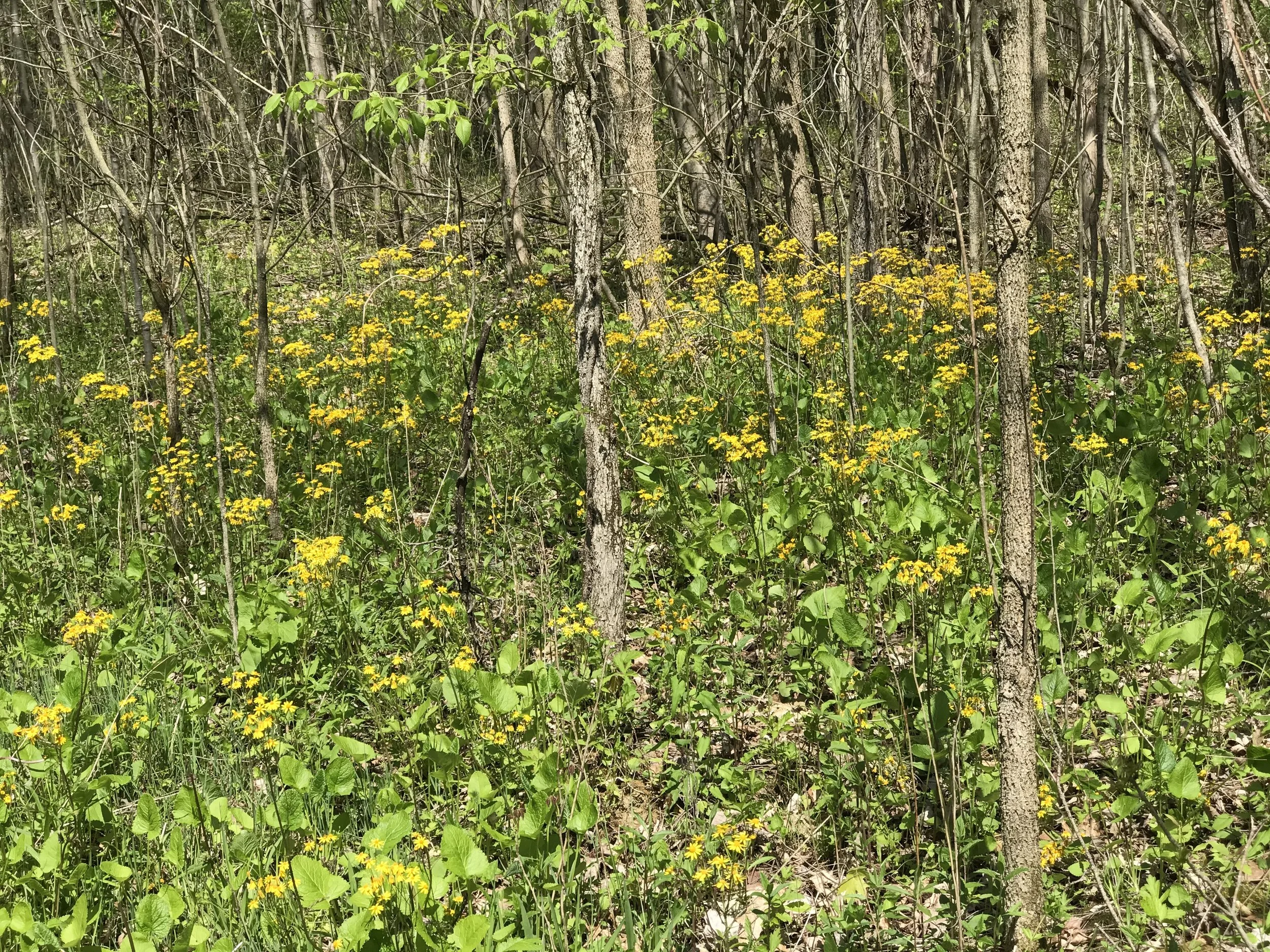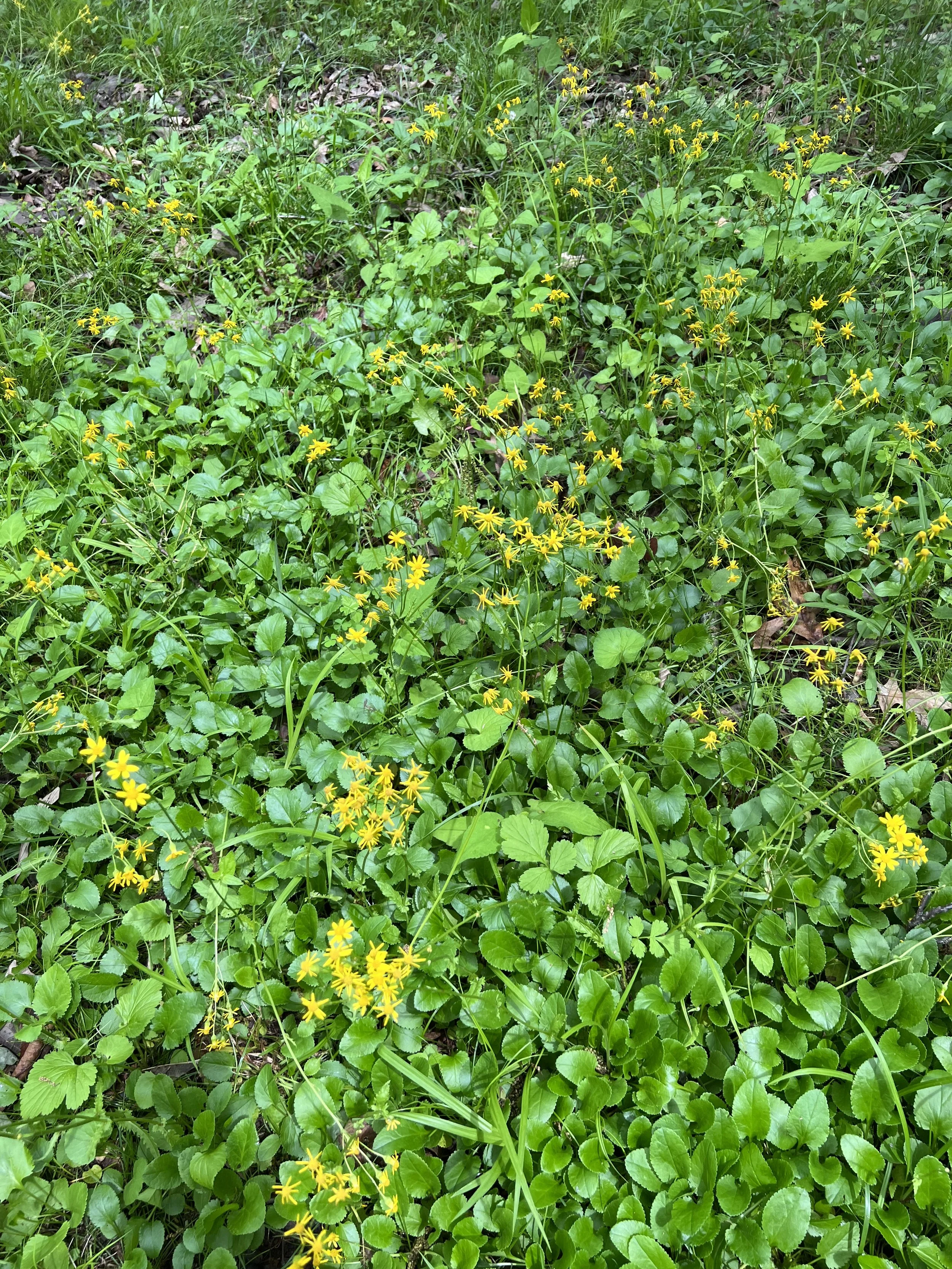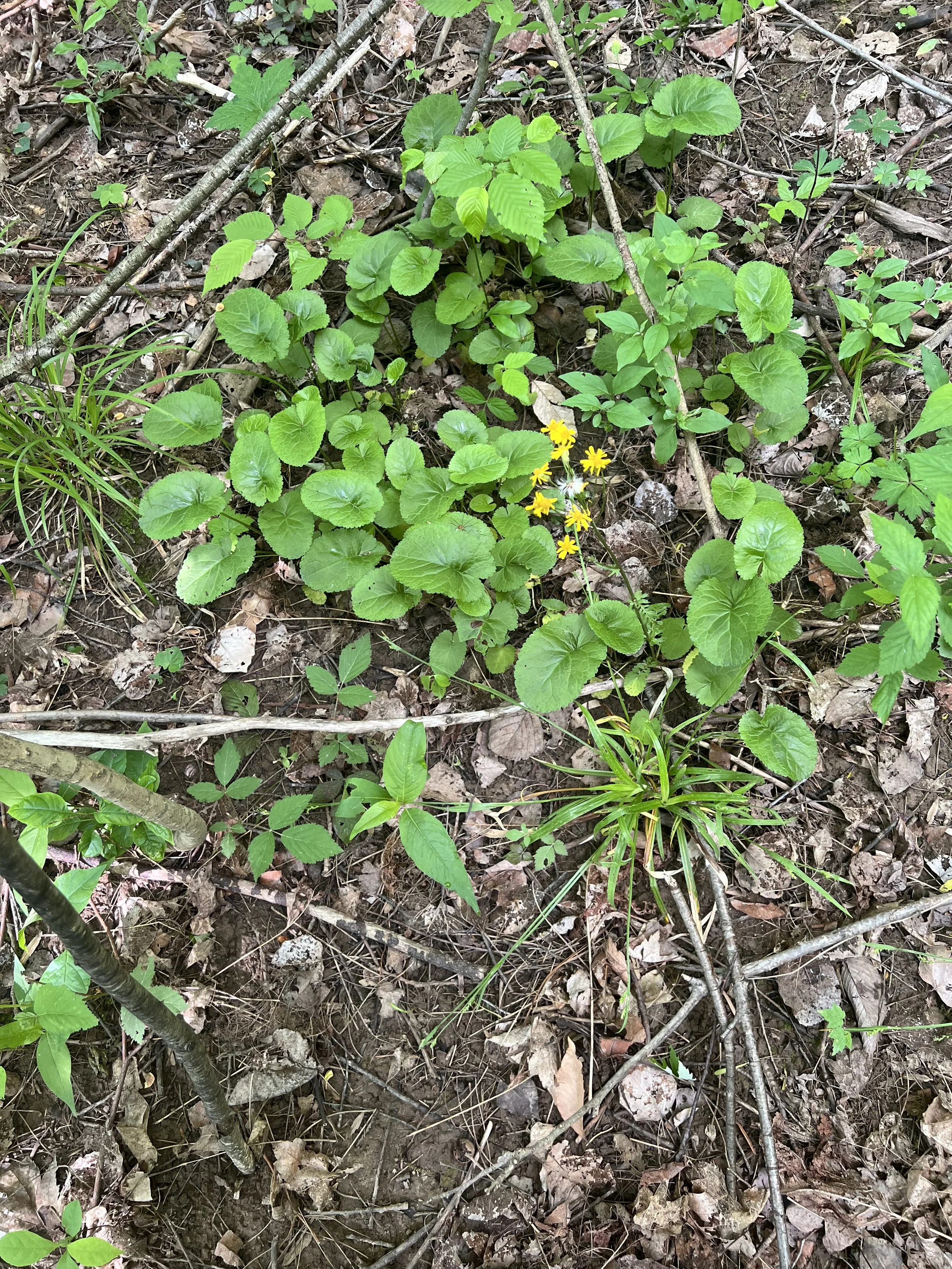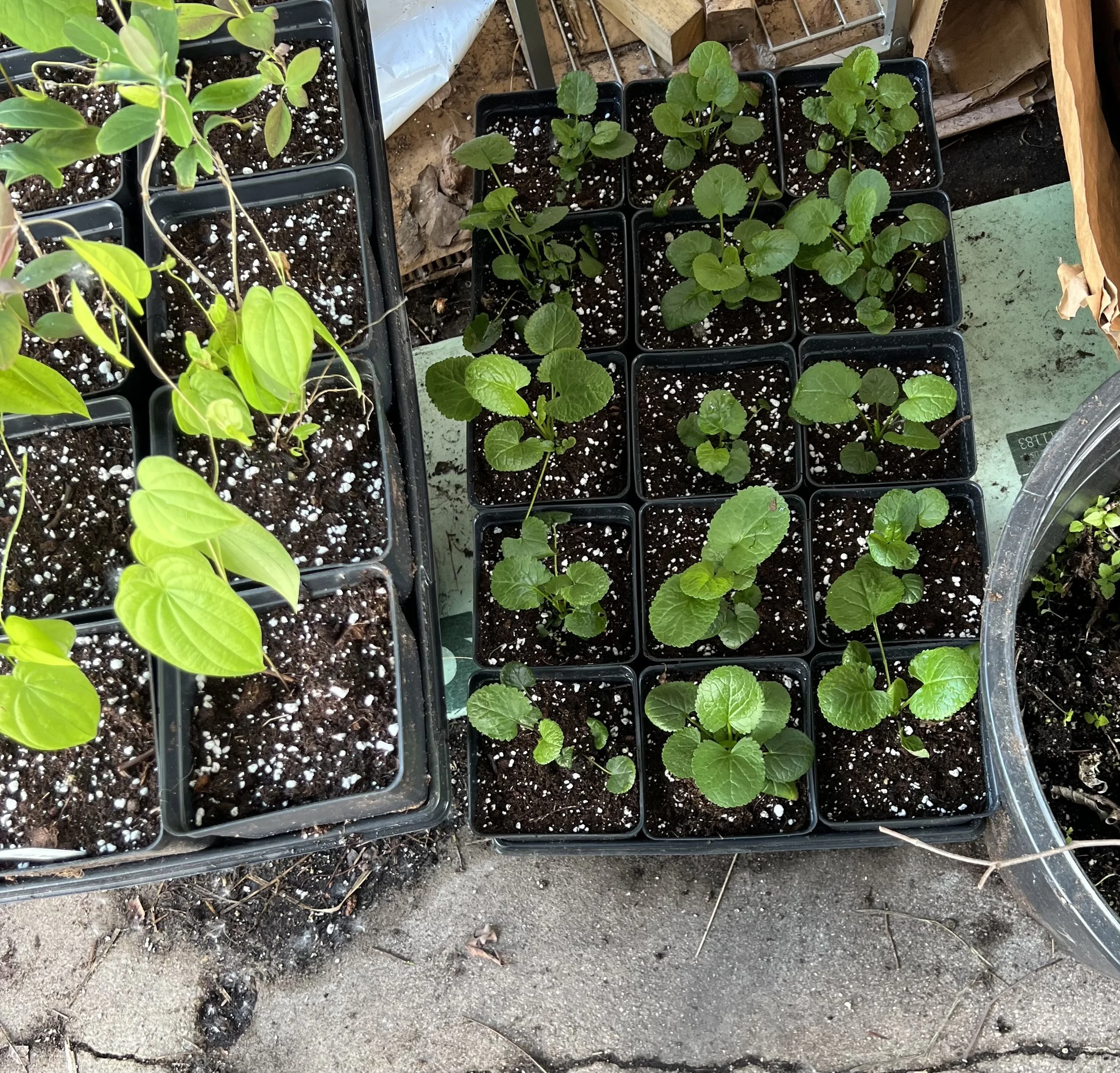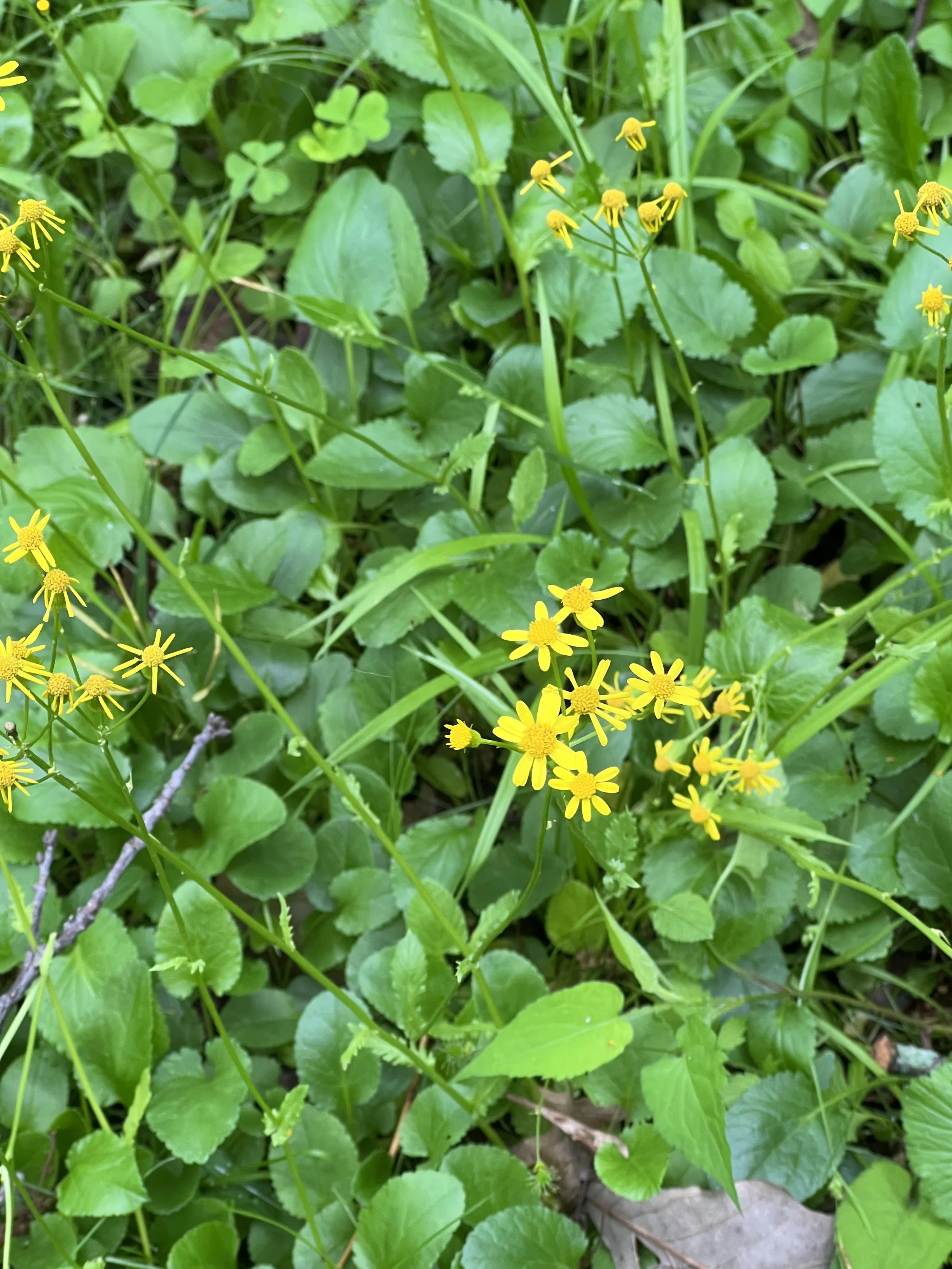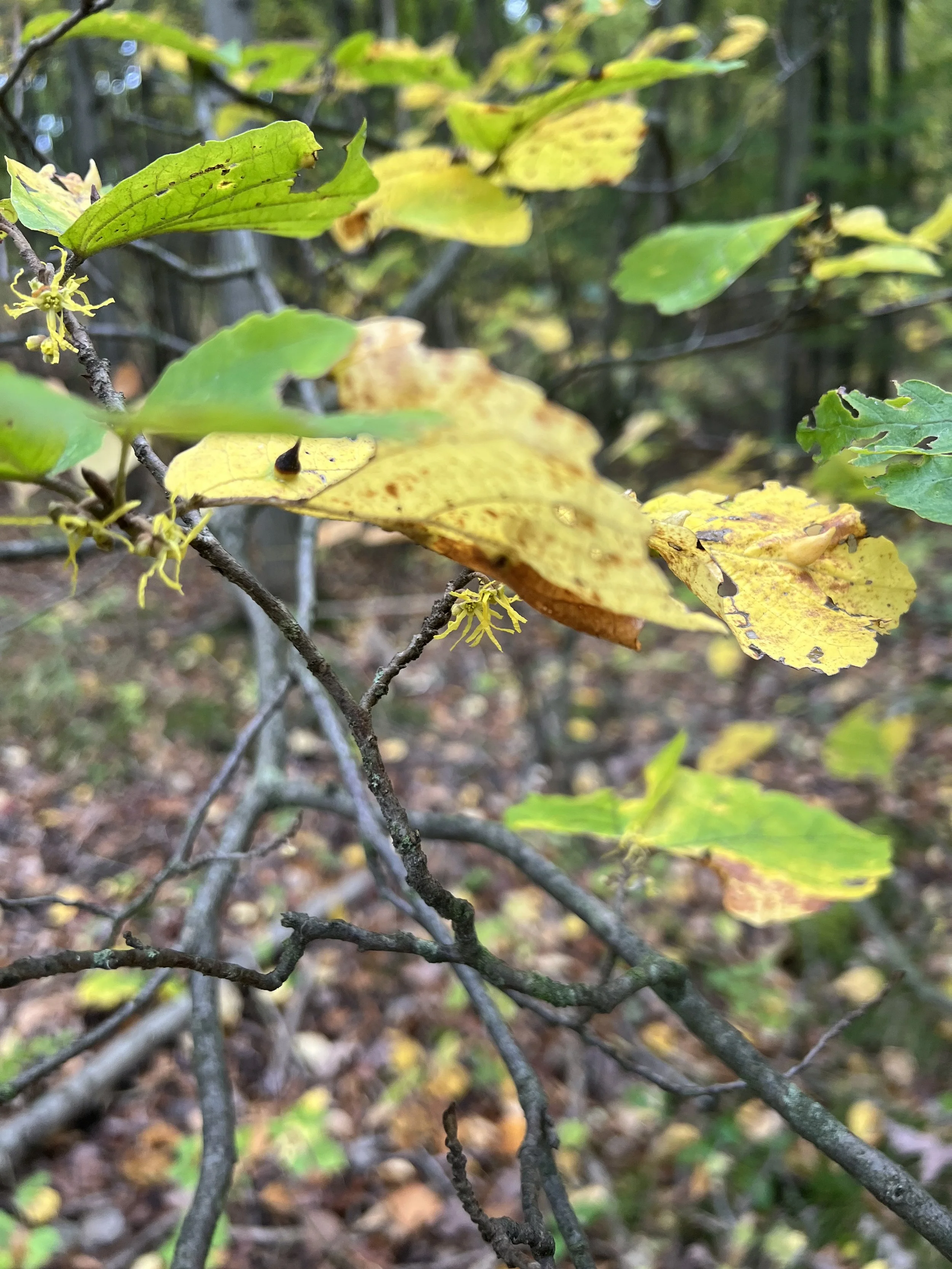 Image 1 of 8
Image 1 of 8

 Image 2 of 8
Image 2 of 8

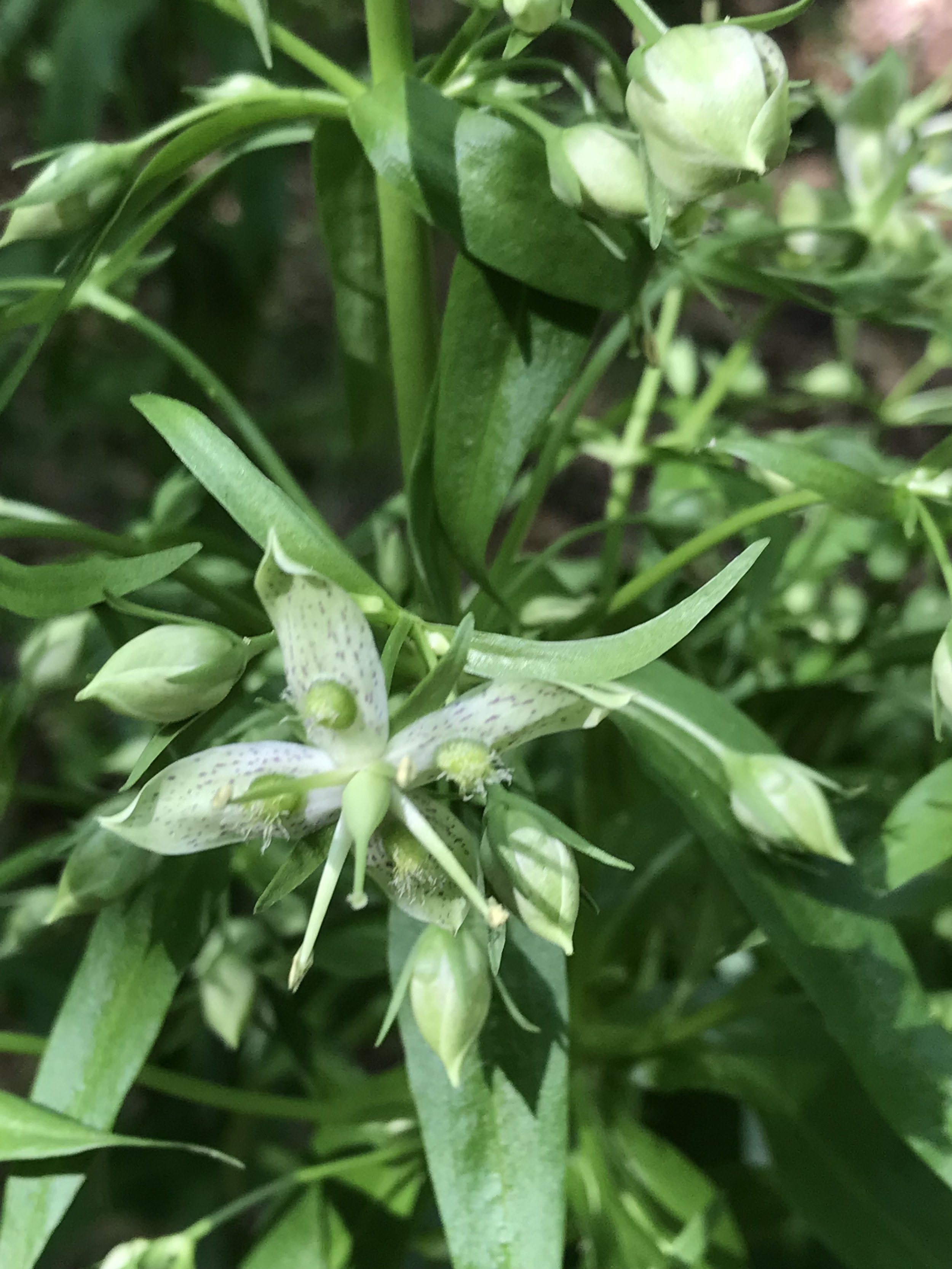 Image 3 of 8
Image 3 of 8

 Image 4 of 8
Image 4 of 8

 Image 5 of 8
Image 5 of 8

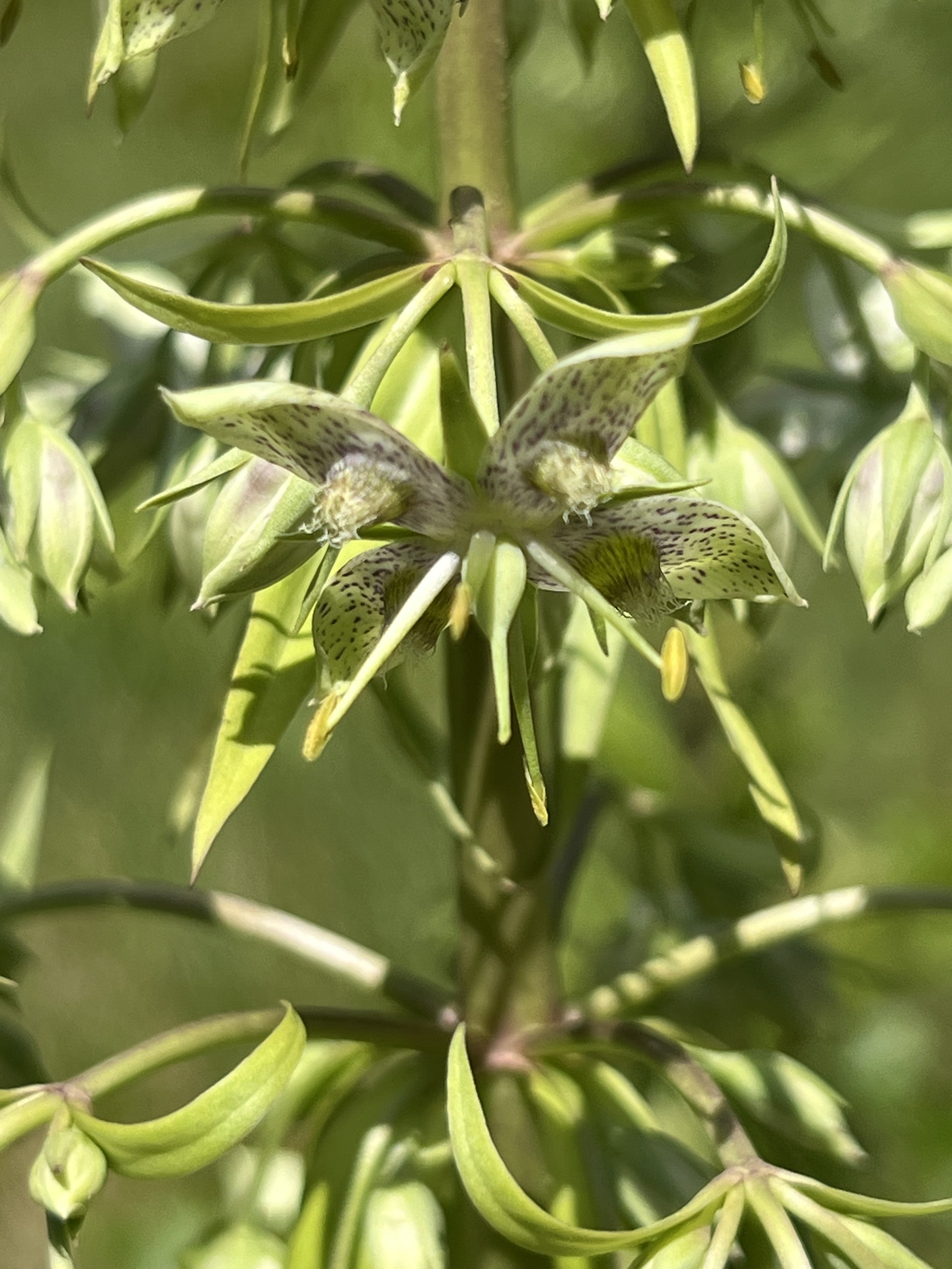 Image 6 of 8
Image 6 of 8

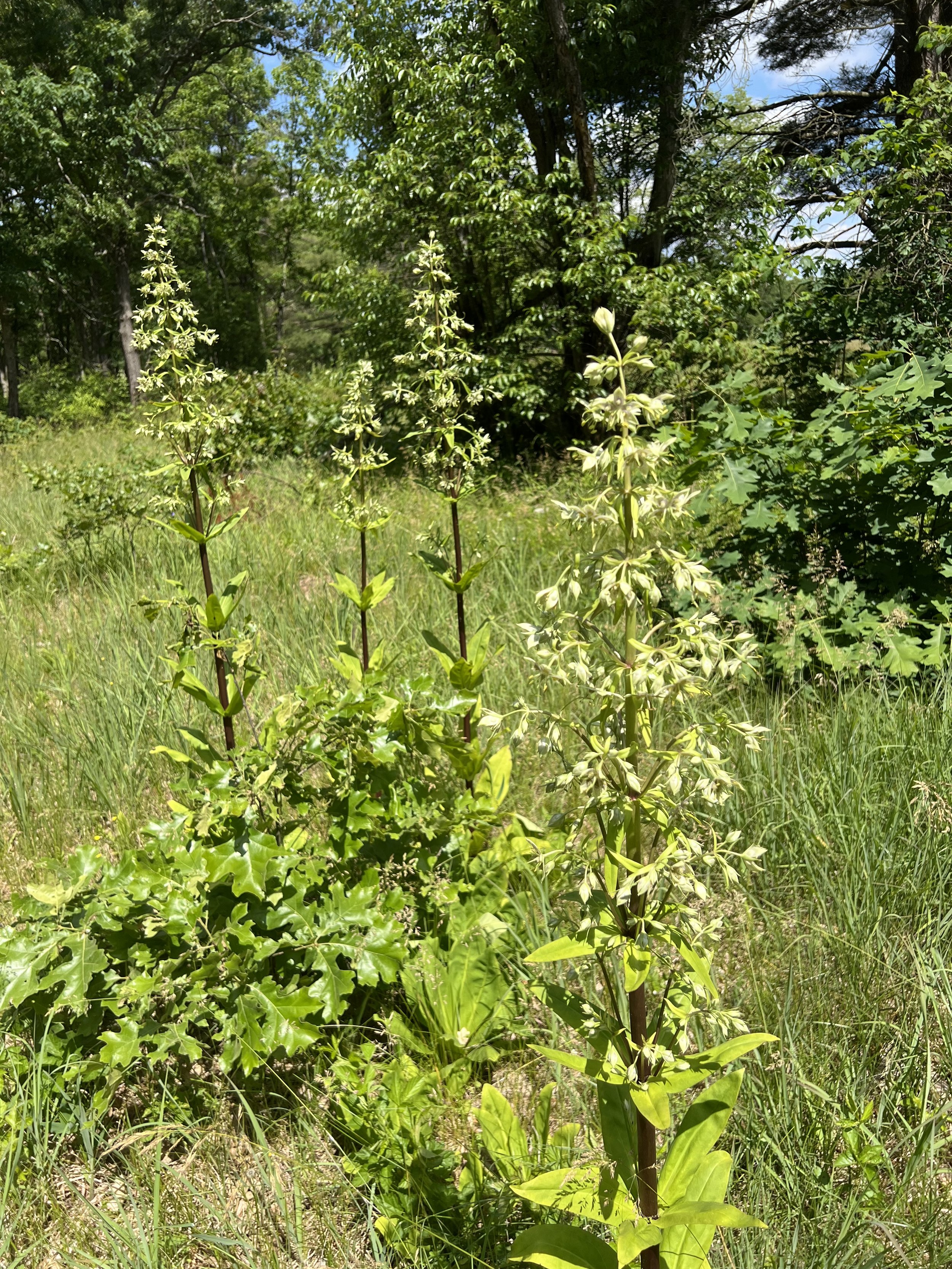 Image 7 of 8
Image 7 of 8

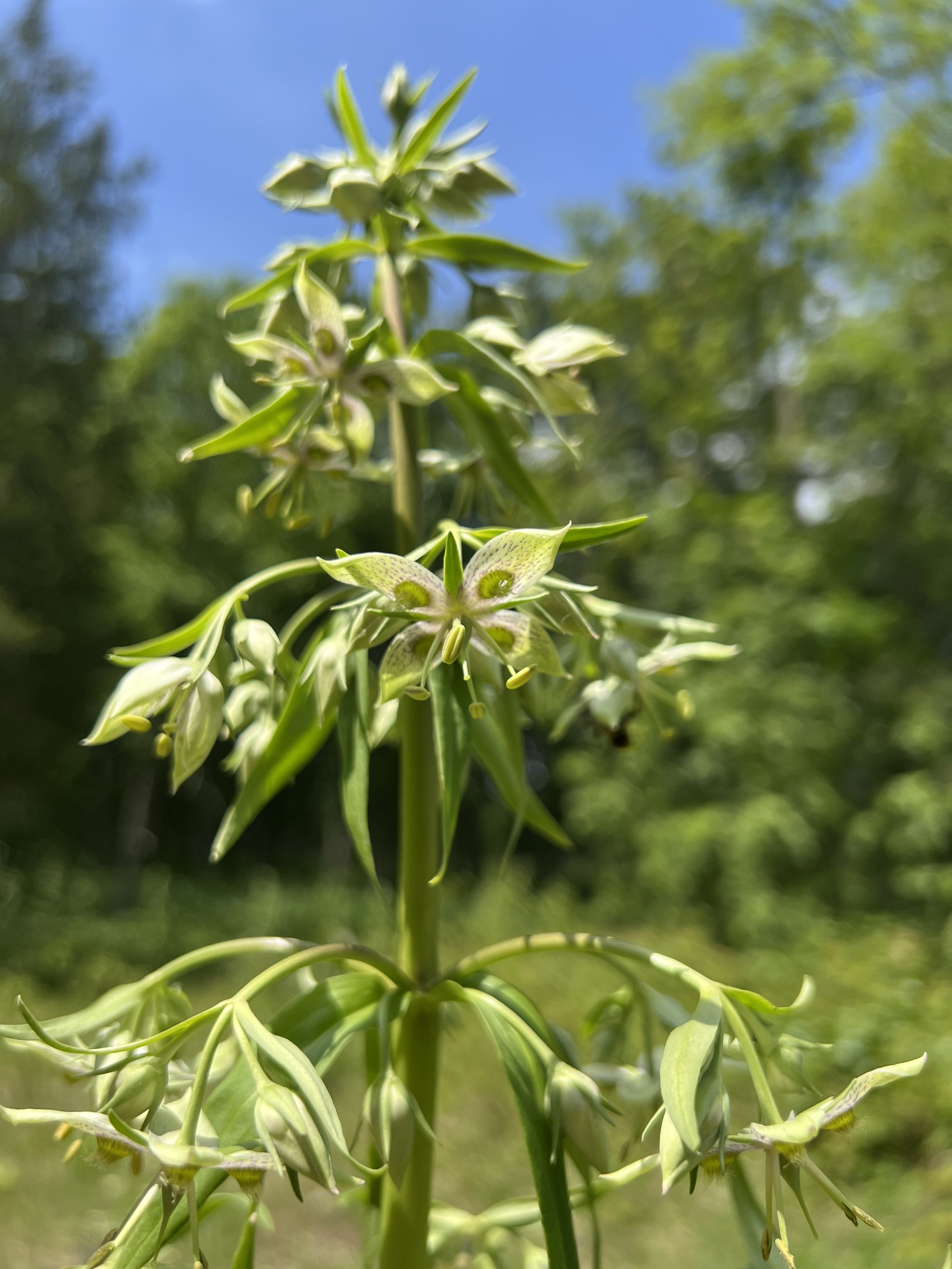 Image 8 of 8
Image 8 of 8









American Columbo (Frasera caroliniensis)
American Columbo is an unusal plant in the Gentian family that has some relatives out west: this is the only plant in the genus in the east.
The basal leaves are large, green and smooth. This is all you will see for 10-15 years or longer. Then the monocarpic (flowers once in its lifetime) plant bolts up a thick stem that is green or reddish. Large leaves, similar to the basal leaves are in whorls around the stem. This plant can be six feet tall or taller. The flowers are quite unusual. They have four or five petals, four stamens, a nectar pad on each petal and a large green superior ovary in the center. American Columbo plants make a lot of flowers!
I have only seen this plant in flower one time and was lucky enough to see a bumblebee on one of the nectar pads (see photos).
American Columbo grows in dry areas, like oak savannahs, oak-hickory forests, or sometimes open areas.
After flowers have been pollinated, seeds develop in the ovaries and they enlarge. Once they turn brown, they split open and the seeds can fall out.
We are excited to offer this plant for sale. Though it will be a while until you see blooms, consider replacing hostas with the beautiful basal leaves and then keep your fingers crossed!
American Columbo (Frasera carolinensis)
Michigan Flora reference page for state distribution: American Columbo
height: basal rosette—8-15 inches, bolted plant—4-6 feet
bloom time: June-July
soil: medium to dry
sun: dappled shade, part sun
plant spacing: 24”
flower: pink, white, green, purple speckles
life cycle: monocarpic; stays as a basal rosette for 15+ years, produces a stalk with flowers and dies
family: Gentianaceae
seed source: Michigan
American Columbo is an unusal plant in the Gentian family that has some relatives out west: this is the only plant in the genus in the east.
The basal leaves are large, green and smooth. This is all you will see for 10-15 years or longer. Then the monocarpic (flowers once in its lifetime) plant bolts up a thick stem that is green or reddish. Large leaves, similar to the basal leaves are in whorls around the stem. This plant can be six feet tall or taller. The flowers are quite unusual. They have four or five petals, four stamens, a nectar pad on each petal and a large green superior ovary in the center. American Columbo plants make a lot of flowers!
I have only seen this plant in flower one time and was lucky enough to see a bumblebee on one of the nectar pads (see photos).
American Columbo grows in dry areas, like oak savannahs, oak-hickory forests, or sometimes open areas.
After flowers have been pollinated, seeds develop in the ovaries and they enlarge. Once they turn brown, they split open and the seeds can fall out.
We are excited to offer this plant for sale. Though it will be a while until you see blooms, consider replacing hostas with the beautiful basal leaves and then keep your fingers crossed!
American Columbo (Frasera carolinensis)
Michigan Flora reference page for state distribution: American Columbo
height: basal rosette—8-15 inches, bolted plant—4-6 feet
bloom time: June-July
soil: medium to dry
sun: dappled shade, part sun
plant spacing: 24”
flower: pink, white, green, purple speckles
life cycle: monocarpic; stays as a basal rosette for 15+ years, produces a stalk with flowers and dies
family: Gentianaceae
seed source: Michigan


